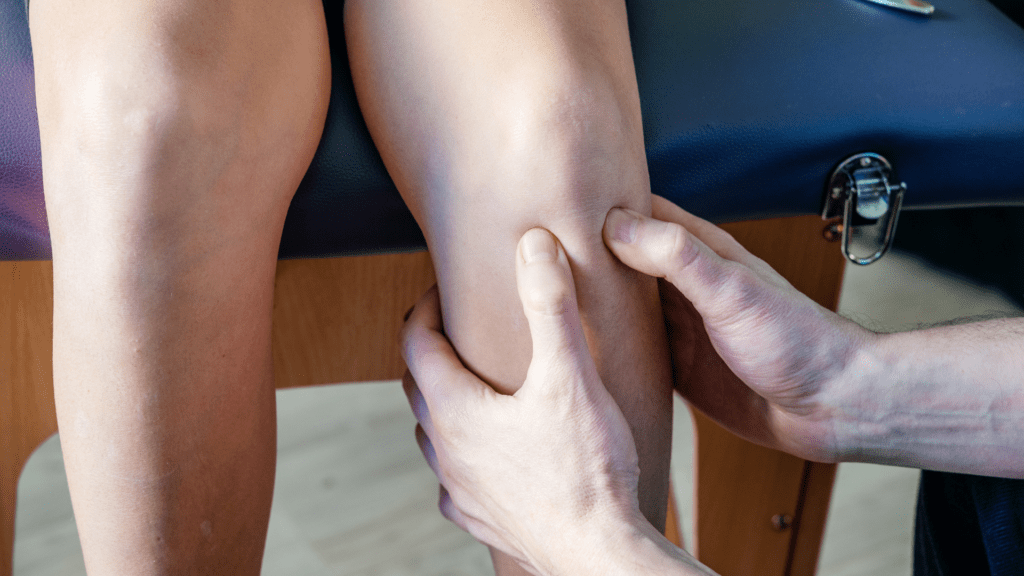Hi Everyone! I’ve been a Fascial Manipulation® practitioner and “junkie” since I was first exposed to it at an introductory course in 2014, taught by my soon-to-be good friend and colleague Larry Steinbeck.
At that time, I was a seasoned clinician of 30 years, with a long list of continuing education courses to my credit and a thriving outpatient physical therapy practice. I attended the course largely out of guilt/obligation to another good friend and colleague, but was blown away by how much the science behind it echoed the science of my trigger point dry needling training.
In my typical, subtle style, I dove into that FM course head first, dragged all the therapists in our practice along, and soon became certified as an Fascial Manipulation® clinician and instructor.
Why put myself and others through all this? I can think of 10 good reasons to practice Fascial Manipulation:
Fascial Manipulation works.
I have never utilized a method that works as effectively as FM. In my now 38 years of practice, I have seen, heard, tried, embraced, and abandoned multiple treatment techniques. When I came back from my previously mentioned introductory course, one aspect of FM that captivated me was that even with my very limited understanding and exposure to the practice, I began to get good results. Looking back, I think it may have been beginner’s luck, but it still worked then and continues to be the foundation of my practice approach.
Fascial Manipulation incorporates a global approach to the body.
Yep. The whole body, not just the knee or shoulder the patient is pointing to. With FM, you learn how their old foot fracture may be playing into their current back pain, or how the completely resolved past ankle sprain is now tearing up their knee. This approach enables me to treat multiple complaints in one fell swoop, and not artificially compartmentalize the body.
Fascial Manipulation makes sense of past medical history.
I don’t know about you, but in the past, I have felt like getting a thorough medical history on someone was merely for pretense and litigation. I was taught it in school, but I never had a platform for applying it to their presenting complaints. Ok, I am sorry you broke your elbow when you were 10 but does that really play into your shoulder pain at age 20? FM has taught me YES! It’s one of the aspects I really like about FM: old is gold. We say this to mean that those old problems may be the key to the new problems, especially when they are insidious or idiopathic.
Fascial Manipulation provides a logical explanation for the problems people present (and the silly diagnoses they are given).
Back to that insidious/idiopathic point. My coworker, Adam, defines idiopathic as, “The idiots haven’t figured out the pathology.” If you’ve googled in practically any medical condition in search of deeper information, you may notice that many begin with this disclaimer: “The actual cause of blah blah blah is not fully known….” Maybe it’s because the connective tissues and specifically the fascia is being overlooked as the myopic focus remains on joints, tendons, ligaments (which, in many cases, are really thickening of the fascia), and muscles. Patellofemoral pain or tracking problems are a good example, and very common. Why are those knees cracking so bad? Why does tape help as long as you wear it until you have no skin left? Why doesn’t strengthening solve the problem? Maybe it’s because dysfunction and loss of slide in the fascial layers are pulling the patella out of the femoral grove, and none of the previously mentioned interventions target that.
Fascial Manipulation gives you a framework for how to approach a problem.
Have you ever had a patient who had problems all over? Where do you begin? It can be overwhelming. Or how about the patient who doesn’t get better, who isn’t responding to your best care? Understanding the FM method can help you identify a starting point with problems-all-over patients, or how an unresolved (but asymptomatic) past problem remote to the current complaint may be the holdout. Knowing FM gives me a more powerful and effective way to address complaints than just going to the site of pain. Instead, it logically and methodically directs me to what may be causing the site of pain. In other words, the root cause. Once I know what sites are going to be the most effective for treatment – which may not include the site of pain – I may then choose to needle that point, elbow it, or use another technique. But the FM method is what directs me there.
Fascial Manipulation allows me to successfully treat conditions I never did before.
I never would have believed that my practice would become so entrenched in pelvic problems. I always thought that meant you had to go in there – male or female, and it didn’t appeal to me. But by applying the global approach of FM I began getting results with those kinds of problems, even when I was targeting something else and even when I stayed external. Now I can’t separate them, and I don’t try to! I tell people I can’t isolate which problem we’re treating because they are so interconnected. I have experienced changes in headaches by treating the feet, shoulder pain by addressing the hand, and back pain by treating the abdomen. And, by the way, I rarely go in there.
Fascial Manipulation introduces you to clinicians from all over the world.
I’m one of those people who, if I hang out long enough with someone with an accent, I start talking like them. Especially if I’ve had a glass of wine. So I have to be careful when I go to FM conferences and courses as they are full of people from all over the globe! FM is taught and successfully used by clinicians all over the world, and it’s amazing and fantastic to rub elbows with these folks.
Fascial Manipulation elevates your practice.
I never imagined I would have a waiting list for patients, which I attribute to results and word of mouth. I never imagined people would drive several hours for me to treat them, stop on their way from Michigan to Florida for an appointment, or land their helicopter in my parking lot and dash in for treatment. Crazy stuff. Our practice has a robust, enduring reputation in our community and beyond, and FM has further fueled this.
Fascial Manipulation opens up opportunities.
I love speaking at conferences, teaching courses, mentoring colleagues, and even contributing a chapter to a book on FM. I doubt much of this would have happened if I had not brought FM into my practice model.
Fascial Manipulation makes me feel good.
Not to get sappy, but it really does on several levels. Personally for me, it has been a treatment approach that has helped me manage my own issues related to being hypermobile, smashing up my Toyota, spraining my ankle, breaking my elbow, etc. But it also makes me feel good about being a clinician. There was a time when I thought about getting out of practice and doing something entirely different – I was just burnt out. A lot of that was due to working hard to get patients better, attending courses, reading, and giving 110% to each patient only to get mediocre temporary results. But FM has changed that for me, giving me renewed hope that I can change these problems for people and that I am making a difference. It doesn’t get any better!
Learn More About Fascial Manipulation® (FM) HERE.
Colleen Whiteford
Dr. Colleen Whiteford, physical therapist, owns and operates Appalachian Physical Therapy with husband and partner, Bill. The practice has been providing outpatient physical therapy services since 1987 with local offices in Broadway and Harrisonburg. Their perspective utilizes a non-traditional, total body approach with a focus on fascia, movement, and early intervention/prevention. They address a wide variety of orthopedic, neurologic, gynecologic, and internal medicine problems with Fascial Manipulation®, dry needling, and educating people as to their options for maximizing and maintaining health before it is lost.
Dr. Whiteford is a 1984 graduate of St. Louis University’s program in physical therapy. She has been in private outpatient orthopedic practice since 1986. Her emphasis on the role of the connective tissues has grown her practice to encompass diagnoses not typically included in outpatient orthopedic practice, including pelvic health. She attributes this to attention to the fascia and embracing a total-body approach in the management of musculoskeletal and orthopedic problems.





